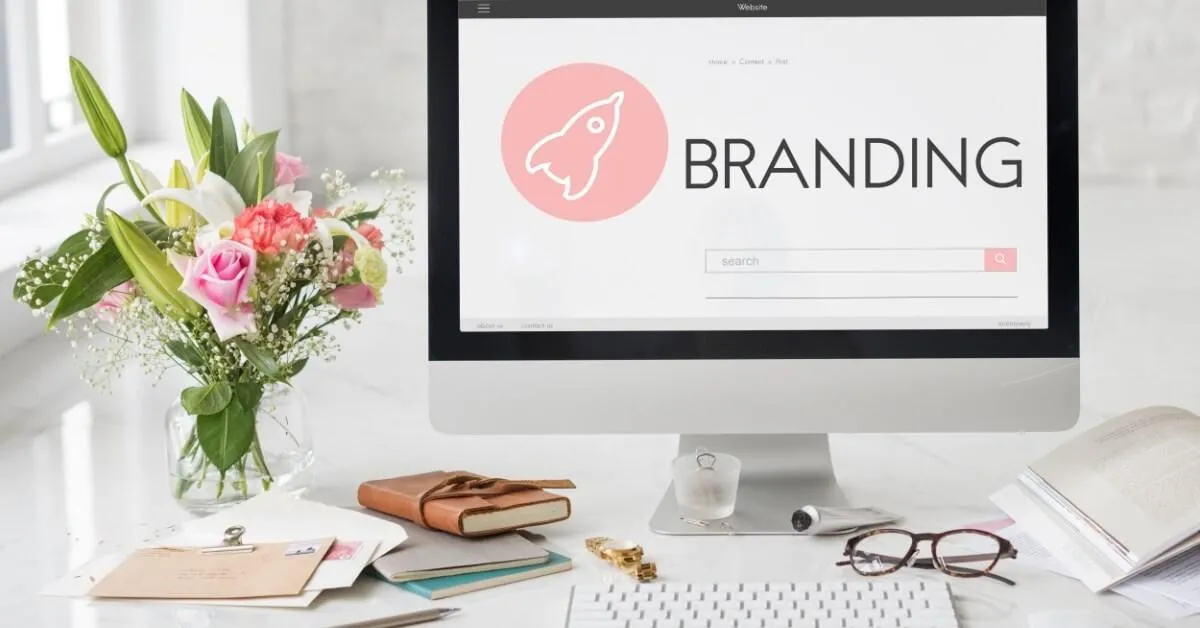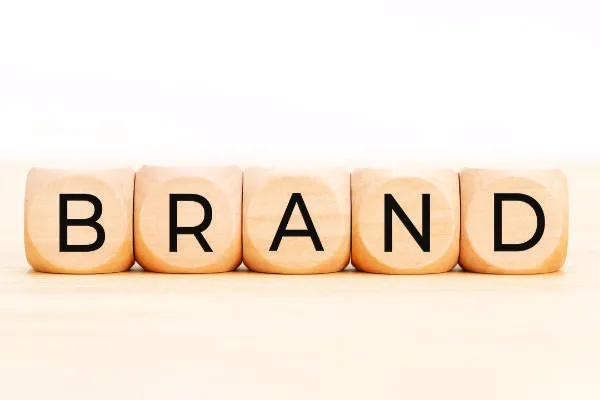How to Define Your Brand in 5 Simple Steps

When it comes to branding, there are a lot of factors to consider. How do you want your company to be perceived? What colours and designs represent your brand? What fonts convey the right tone? Defining your brand can be a daunting task, but with these simple tips, you'll be on your way to creating a cohesive and consistent brand identity.
Most people think that branding is all about designing a cool logo and coming up with a snappy name. While those are important aspects of branding, they are only the beginning. In order to create a successful brand, you need to define who you are as a company and what you stand for. These five simple steps will help you get started! 👍
1. Define your mission and values
Running your own business is hard work and it's rarely just about earning money! Examining your own core values and spending some time thinking about your 'why' will help make other decisions in your business so much more simple.
Values
Your core values are the guiding principles that drive everything you do as a company, if your business is just you, this will simply be a reflection of your personal values. If you have a team, it's worth taking the time to think about the shared values that are important to you all and that you can all be proud to uphold within your company. Your core values should be reflected in everything from the way you treat your employees (or the way they treat each other) to the products or services you offer. It's the foundation that your business is built upon and will help make decisions about all other aspects of your business so much easier.
Mission
Writing a mission statement helps your customers understand what you're all about and makes it easier for you to make decisions that reflect your core values. It should be clear, concise, and easy to remember.
At its most basic, a mission statement should include what you do, how you do it and why you do it. In other words, it should be a brief summary of your company's overall goal. However, your mission statement doesn't need to be set in stone-it can (and should) evolve as your business grows and changes. Think of it as a living document that captures the essence of your company.
While it's important to keep your mission statement short and sweet, that doesn't mean it can't be meaningful. Take the time to really think about what your company does and why you do it. Think about how your core values affect your mission? What sets you apart from your competitors? Answering these questions will help you create a mission statement that is both memorable and reflective of your brand. Some questions to consider are:
What do we do?
How do we do it?
Who do we do it for?
What need are we fulfilling?
What are our core values?
You can then use the answers to these questions to create a simple mission statement with the following components our mission is (verb in present tense - examples below) (for whom) (get this result /benefit) (what you do and how)

2. Define your target market
Now that you know what your company is all about, it's time to start thinking about who you want to reach with your brand. A well-defined target market is essential for any business, big or small. Knowing who you're trying to reach will help you make decisions about everything from the design of your website to the tone of your social media posts.
When defining your target market, it's important to be as specific as possible. Trying to be everything to everyone is a recipe for attracting no-one.
Defining your target audience is an important step in creating a successful brand. Without a clear understanding of who you are trying to reach, it will be difficult to appeal to them in a way that is meaningful and effective. Before you can begin to create your branding strategy, take some time to answer the following questions.
Who are you trying to reach?
What are their needs and wants?
What pain points are you trying to solve?
What makes you different to your competitors?
Once you have a good understanding of your target market, you can begin to tailor your branding strategy to appeal to them. Keep in mind that your target audience may change over time, so it is important to revisit this question on a regular basis. By taking the time to define your target audience, you will be well on your way to creating a successful brand.
3. Develop your brand voice
Your brand voice is how you communicate with your target audience. It should be consistent across all of your marketing materials, from your website to your social media posts. When developing your brand voice, ask yourself the following questions
What tone do you want to set?
What feeling do you want to evoke?
How do you want to be perceived by your target audience?
Your brand voice is how you communicate with your target audience. It should be consistent across all of your marketing materials, from your website to your social media posts. When developing your brand voice, ask yourself the following questions
If you are unsure of how to develop your voice you can look at content you've already put out there and see if you can identify any themes or patterns. Are there any phrases that you use often, or any than you would never use? Are there industry terms that you would naturally know but other may use incorrectly? Once you have a good understanding of the voice you want to use, be sure to keep it consistent across all of your marketing materials.
Answering these questions will help you determine the right tone and approach to take with your branding. It is important to remember that your brand voice should be consistent across all channels. This can be a challenge if you have multiple people working on your marketing, but this is where your branding guide is invaluable. By having a clear understanding of your brand voice, you can ensure that everyone is on the same page and that your message is being communicated consistently.

4. Create a visual identity
Creating a strong visual identity is an important step in branding your business.
If you are unsure of how to develop your voice you can look at content you've already put out there and see if you can identify any themes or patterns. Are Your visual identity is how you represent your brand through design. It includes elements like your logo, colours, fonts, and imagery. When developing your visual identity, it's important to consider how each element will be used. For example, will your logo be used on print materials or just online? Will you need multiple versions of your logo (vertical, horizontal, etc.)? What colours and font styles will you use on your website and in what context?
In essence, your visual identity is how your brand looks and feels. It includes not only your logo, colours etc but also your website design, social media posts and even your shop sign and business card. Creating a strong visual identity is essential for any business, big or small. A well-designed visual identity will help you stand out from your competitors and create an instant impression and a cohesive and recognizable brand that potential and existing customers can connect with.
If you don't have the budget to work with a brand specialist right now, there are lots of tools and resources you can use to create a simple brand for your business right now.

Brand Colours
If you don't have the budget to work with a brand specialist right now, there are lots of tools and resources you can use to create a simple brand for your Determining your colours can be a fun way to start with your visual identity. Do some research on colour psychology and think about what feelings you want your brand to evoke. Colour generators such as Coolors.co are great free tools that are helpful in creating a cohesive colour scheme for your brand. It is important to consider how the colours you use will be perceived by your target audience and whether they fit with your brand message. Remember not to choose too many colours (1 or 2 accent colours is usually enough) and to include at least a couple of shades of grey as well as almost black and off-white. Once you have selected your colours, be sure to use them consistently across all of your marketing materials.
Logo
Your logo is one of the most important elements of your visual identity. It's often the first thing people will see when they come across your brand, there are many logo generator tools such as Canva's Logo Maker. Sometimes, simply using your business name in your company font is simple and effective enough for now. You can always upgrade to a custom, professionally designed logo when there is more money available in the budget.
Brand Fonts
Finding the perfect font combination can be a daunting task. With so many fonts available, it can be difficult to know where to start. That's where font pairing tools such as Fontjoy.com can help. These tools allow you to experiment with different combinations of fonts until you find the perfect match for your brand. Whether you're looking for a free or paid font pairing tool, there are plenty of options available. So take some time to explore the different options and find the one that best suits your needs. With the right font combination, you can make your brand more memorable and conveyed the right message to your audience.
Imagery
The images you use on your website and in your marketing materials should be high-quality and reflect your brand message. If you don't have the budget to hire a professional photographer, there are many free and premium stock photo websites available. Some of my favourites include Unsplash, Pexels and Pixabay. It's a good idea to create a moodboard (I love using Pinterest for this) to get an idea of the type of on-brand photo's you like. Be sure to spend some time browsing through the different options to find photos that fit with your brand identity and message and always check the license required to use images commercially to avoid a costly fine.
Graphic Elements
Graphics such as icons, swooshes, lines and image treatments can help to further define your brand. They can be used to break up blocks of text, add visual interest to your website and social media posts or simply help to reinforce your brand message. When used consistently, these elements can help to make your brand more recognizable and memorable. Free resources such as Flaticon and freepik are great places to find free, high-quality graphic elements that you can use in your branding.
5. Promote your brand
Now that you have a well-defined brand, it's time to start promoting it. There are a number of ways to promote your brand, from traditional advertising to content marketing. The key is to find the right mix of channels for your business and to use them in a way that is consistent with your brand identity.
When promoting your brand, it's important to keep your target audience in mind. Use the same language and tone that you've used in other aspects of your business.
Once you have your branding in place, it's important to test and measure the results. This can be done in a number of ways, such as conducting customer surveys, analysing website traffic, or looking at social media engagement. By testing and measuring your branding efforts you'll be able to keep doing what works and tweak the parts that don't. This will help turn your clients into your biggest fans who love sharing how amazing you are.
Conclusion
Creating a branding guide (even simply one created in Google Docs, Word or Canva) is a great way to remain consistent in your brand message. It should outline in simple terms, your brand identity and how it should be used including your logo, colours, fonts, and other visual elements as well as your brand voice and tone, your values and your mission statement. Your branding guide should be shared with anyone who is working on your marketing or who is representing your business in any way so that they are clear on how to communicate your brand effectively.
Now that you have a better understanding of some of the key elements of branding, it's time to start defining your own brand identity. By using these simple tips you can create a strong visual identity for your business that will help you to stand out from the crowd.
Kind words from our customers

From start to finish Jules was efficient, informative & dedicated.
She has built me a fantastic website which really shows my business at its very best & continues to support me & my website as we move forward with the business.
Vicki Powlson
Village Pets
Want more clients without the social media grind?
Join my free newsletter for simple website & SEO tips that help you get found.
CONNECT
© Copyright 2026 Built with FEA Create * | designed and developed by thewebsitesuccesshub.com
Based in Marston Moretaine, Bedfordshire - helping Women in Business worldwide





